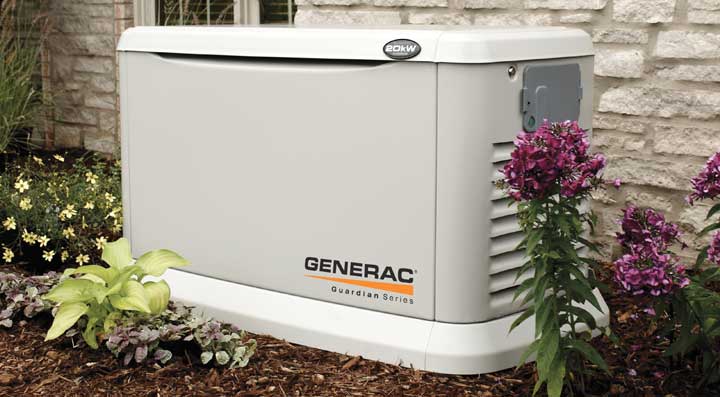
Don't let rain, snow, or wind keep you in the dark. Consider these options to make sure you get the best generator for your needs.
When the power goes off, the stationary generator goes on—without your intervention. This is great if you travel a lot or have a long commute.
Several portables offer this push-button alternative to the hassle of pull-starting the engine. Just factor in the added cost (around $50) if the battery is not included. Stationary models have automatic starting.
Most portable models run only on gasoline, though some come equipped to run on a propane tank or natural-gas line—or can be converted with kits. Wheels
Believe it or not, some portables price these separately. You could probably move a wheeled generator solo, but without wheels, you'd need help. (All the ones we've tested weigh upwards of 200 pounds.) Wheels can cost up to $150 extra.
Check fuel level at a glance on a portable; this is especially useful during long blackouts.
If oil falls below minimum levels, the generator shuts down to prevent damage. This is usually standard on stationary generators, but it's increasingly common on portables, too.
On some higher-end portables; this provides cleaner power that won't overheat sensitive electronics. Some campsites require it because inverter generators typically run much more quietly.
Four or more lets you best use the wattage by spreading the load, though we recommend using these only for emergency use—or for away uses such as camping. See the next section on transfer switches.
This connects to the generator so you can plug in appliances without running (potentially risky) extension cords outdoors.
For more information, contact South Shore Generators in Wareham, MA.
Source: Consumer Reports
Whether your need is to power your business to keep on your production schedule or your home to keep your family safe and sound, South Shore Generator has the product diversity to meet all of your generator requirements. We are proud to sell and service generators from 2kW to 2000kW single set units and up to as large as 100MW utilizing Generac's innovative Modular Power Systems (MPS).